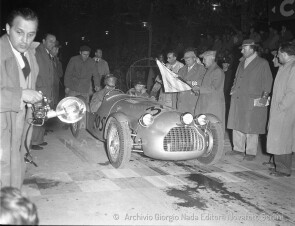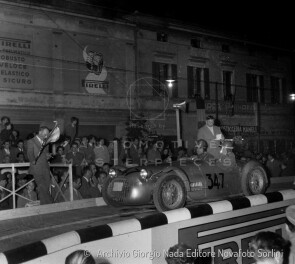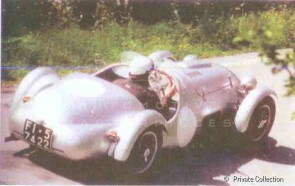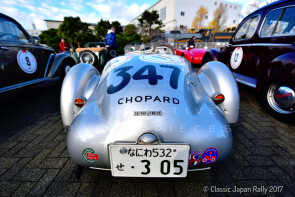
1951 Fiat Ermini Siluro 1100
ON/OFF
Why am I an Automotive Masterpiece?
It's important to point out the name Fiat-Ermini depends of the new CSAI regulations requiring to register all cars, in this way prohibiting to call them with his own name, unless dealing a costly test on mechanical parts that composed the car. This was the reason because until 1951 all cars realized in the Ermini workshop were registered with the name of Fiat-Ermini using the name of the famous Turin manufacturer who indirectly gave some mechanical parts. All the engines built by Ermini, including the model with the Fiat 1100 engine block, have a double overhead camshaft (DOHC). There have never been Erminis or "motorizzate" Ermini with a single overhead camshaft (SOHC). In 1950 Ermini, encouraged by good results and the economic income, commissioned to Gilco in Milan a lowered tubular chassis with an oval section to make its cars more competitive. In 1950 CSAI new rules imposed the use of 80 octane petrol thus undermining the competition of Cisitalia-Abarth and the Fiat-Stanguellini, which until the previous year had used special alcohol mixture to enhance their engines and now couldn't compete to the power of Fiat-Ermini engine. The results will come soon. By the end of the year six engines were sold and in 1951 three cars were built equipped by tubular Gilco chassis torpedo shape. Two of these were bodied by Motto Torino and the other was bodied by the Mariani workshop in Pistoia.
Chassis no. F035651F is a Fiat Ermini 1100 with a Siluro body by Motto, one of the just two cars built by Motto in 1951. It is the 9th car built by Ermini. A characteristic that makes this car recognizable and a unique is the trapezoidal front grille. Looking at it, every detail speaks of speed: the open bonnet reveals a tower of two double-barrel carburettors feeding a high elaborated engine unit; the cockpit is barely protected by a double windshield and has a tiny, faired mirror; the lightened dashbord is in embossed aluminum, the large wooden rimmed steering wheel is a race component. The car raced the 1951 Mille Miglia with the team Palmieri/Pieratelli. Then it continued racing with owners-racing drivers Otello Biagiotti and Enzo Rogai. With Rogai, the car gained its first success: a 3rd in class at the 1952 Firenze-Fiesole and participated again at the Mille Miglia in 1952. This time ranking a good 59th Overall / 8th in class. There is no evidence of participation in competitions after October 1952, but the history of the owners is traced to the present day. Restored in 1990s, from 2008 it came back on the Mille Miglia roads in occasion of re-enactments. It also attended to events for classic cars in Japan. The car is featured in the book Mille Miglia's Chassis - The Ultimate Opus Volume III.






